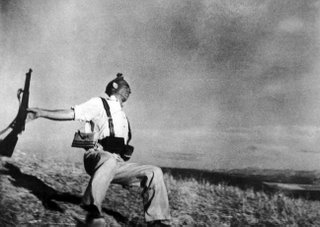The Three Burials of Melquiades Estrada



The Three Burials of Melquiades Estrada belong on that short list of recent films that have left me speechless, literally. I was unable to talk after I saw The Passion of the Christ, Million Dollar Baby, and now The Three Burials. It is something that Peckinpah would be proud of. In begins with a solid foundation of honor and loyalty between two men and it throws in a little madness for good measure. At a time when hundreds of lives are casually tossed aside in action films, here is an entire story where one man's life is honored and one man's death is avenged.
In his amazing directorial debut, Tommy Lee Jones also plays a hard-working cattle operator who hires an illegal Mexican immigrant named Melquiades Estrada to work as a cowboy. Melquiades is killed in a stupid, stupid shooting accident with a rookie Border Patrol agent. Jones sees that the local sherrif is going to do nothing about the case, so he takes justice into his own hands. And not simple justice (that would simply involve killing the crooked agent) but poetic justice, and this elevates the story to a higher realm of parable.
The film's writer, Guillermo Arriaga (who also did 21 Grams) was honored at Cannes 2005 as best writer, and Jones was named best actor. All the action takes place in a small border town with an appalling poverty of spirit. Just loooking at the hollow people in landscapes makes you feel empty. It is a hard land for men, and a heartbreaking one for women. The Border Patrol agent beats up a Mexican woman trying to enter the country and is told by his commander, "You went way overboard there, boy." He is violent and cruel, perhaps as a way of masking his own insecurity.
Before his death, Estrada often spoke to Jones about his wife and his family in Mexico. He carried a picture of them in his pocket wherever he went. Being miles away from my own family and loved ones, I knew the feeling. Estrada made Jones promise that in case anything should ever happen to him, he wanted to be buried back home in Mexico in the village where his wife and children are. Taking justice in his own hands, Jones kidnaps the border patrol officer and explains to him that they are going to ride into Mexico to give the man that he killed a proper burial.
There is a Native American saying, "All a man can do is pray for a good death." But before you earn that privalege, you would have to learn the value of a life. It is both cheap and priceless.






